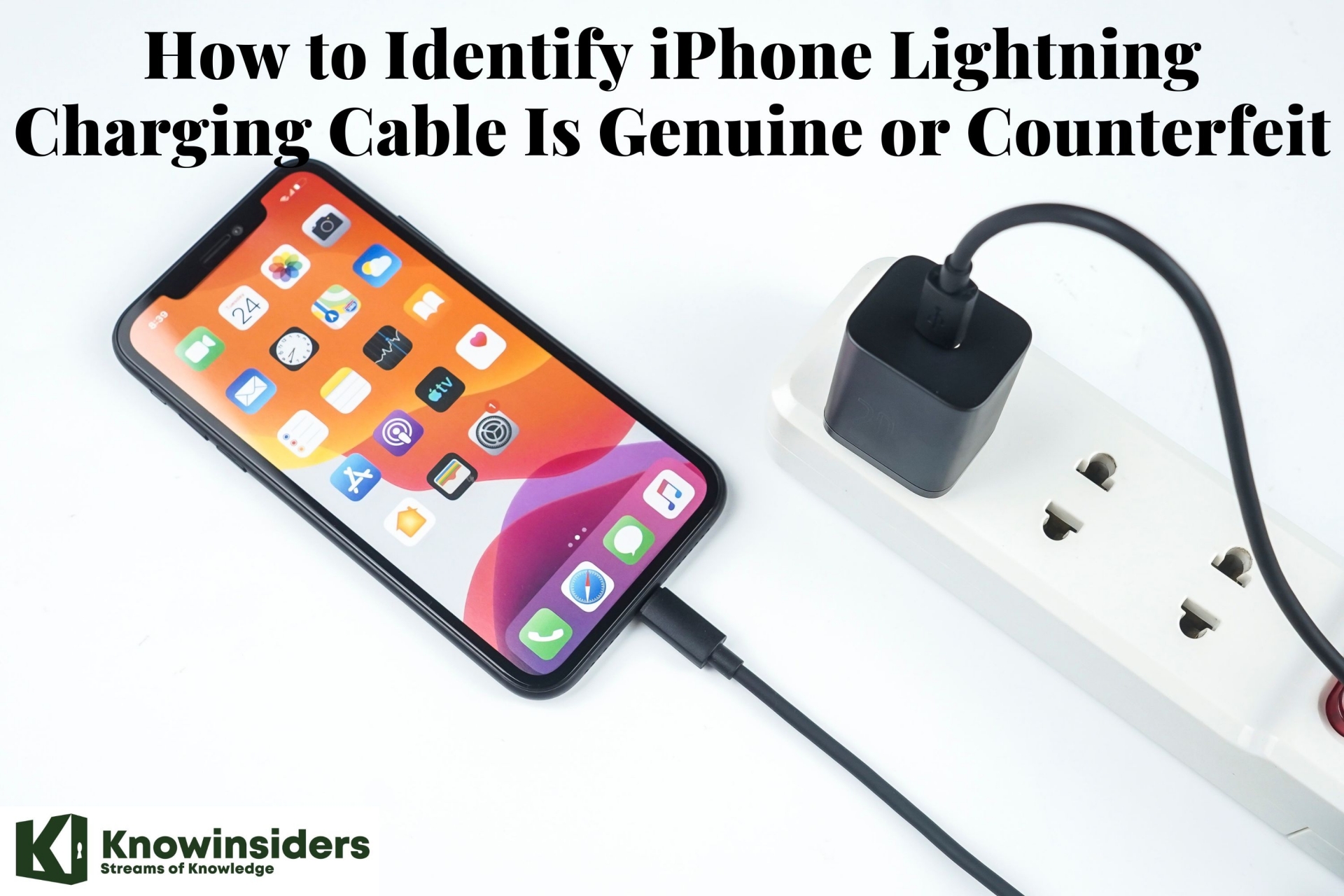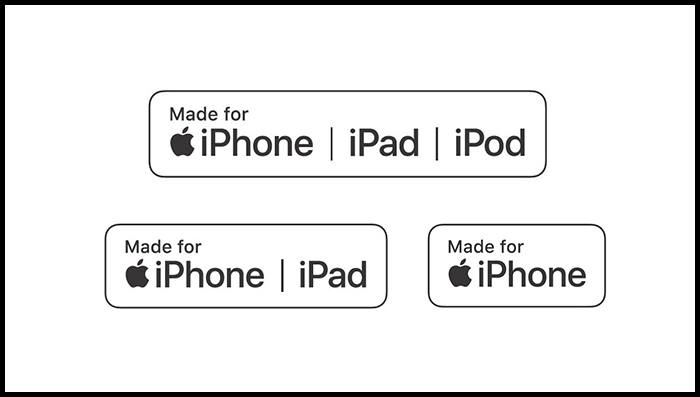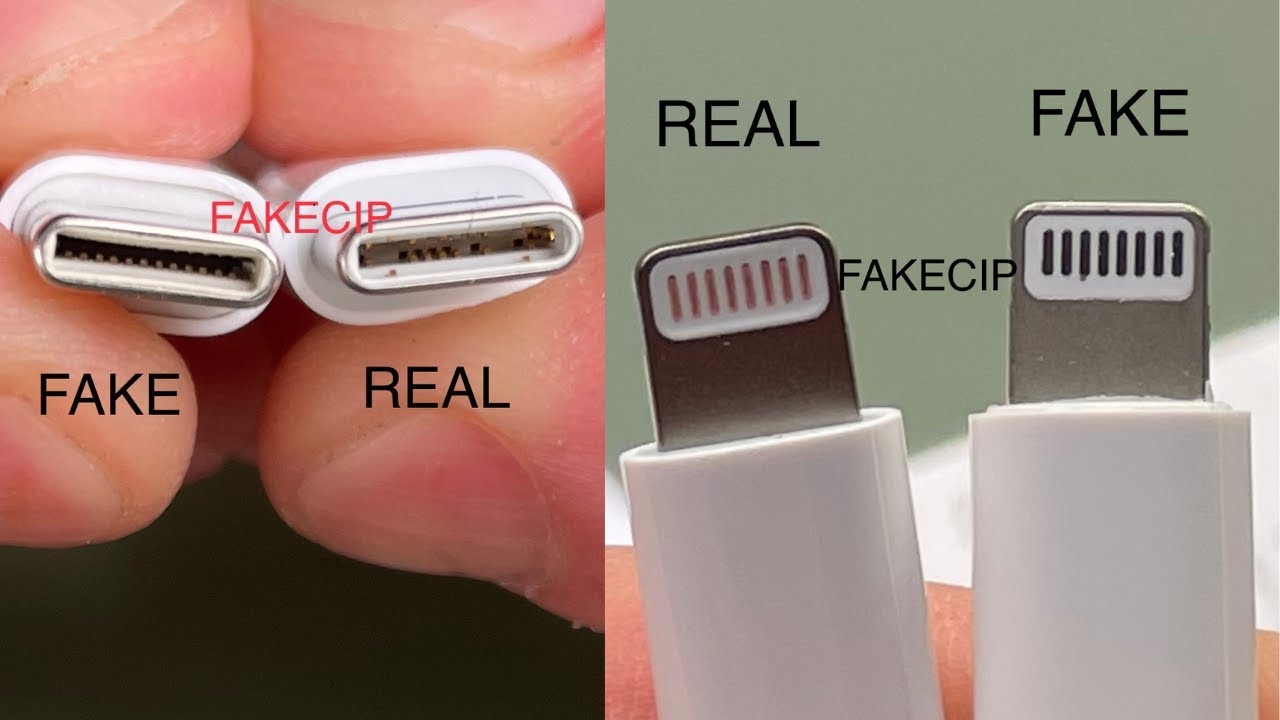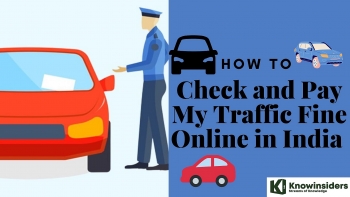How to Identify 'Counterfeit' iPhone Lightning Charging Cable
 |
| How to Identify iPhone Lightning Charging Cable Is Genuine or Counterfeit |
| Table of Content |
A fake data cable and a genuine iPhone cable look very similar at first glance. This article explains how to distinguish between a genuine, Apple-certified iPhone cable and a fake one. You will also discover the consequences of utilizing unlicensed Lightning cables.
It can be challenging to distinguish between genuine and fake iPhone cables due to the proliferation of cheap, genuine-appearing knockoffs. However, you can spot telltale signs to differentiate a real iPhone cable from a fake one. You can tell the real ones from the fakes by using the information listed below.
Distinguish real and fake chargers
Depending on where they are from, genuine chargers will come with a variety of pin types. The 3-pin type is typically produced in Asian nations like Singapore and Hong Kong; the 2-round-leg type is typically produced in European nations like France and Vietnam; the 4-legged type is from the Americas like the US and Canada; the 2-crossed flat-leg type is typically produced in Australian nations like Australia.
Users can tell if a product is real or fake based on the origin printed on the charger and the shape of the plug.
Additionally, the charging cable's exterior design reveals which cables are real and which are fake. Genuine iPhone chargers typically have very consistent, even edges, don't deviate or have three vias, and the parameters printed on the charger must be clear and legible rather than dark and hazy. Typically, parameters are not overly bold.
Power socket contacts on counterfeit chargers are frequently extremely shiny, as opposed to genuine chargers' dull appearance, and the print is frequently unclear and occasionally dark or light.
Effects of Using Fake iPhone Cables
Your smartphone may suffer from issues with fake charger quality. The chargers themselves have a tiny fuse inside that will blow if it overloads. It stops sparks or fire from damaging the system or starting the fire. The amperage, voltage, and current don't really matter if basic safety precautions are taken because your phone will always be frying. Additionally, if you try to save a few dollars on a charger, you run the risk of completely losing your phone.
Your phone's fake charger may also cause your battery to die quickly or with severe consequences. Being the least expensive charger on the market is a counterfeit charger's main concern. It's true that achieving quality isn't their primary goal, so there's a decent chance that it won't function as it should. It still functions, but it's not as good, which is what makes buying one for someone else difficult.
Use of a fake or unlicensed Lightning accessory may result in the following problems:
Your iOS device might sustain damage.
The cable could be easily broken.
The connector end may come loose, become extremely hot, or fail to fit your device properly.
Your device might not be able to sync or charge.
How to Identify Whether iPhone Lightning Charging Cable Is Genuine or Counterfeit
1. Check for the MFi
 |
| Photo: dienmayxanh |
Verify the packaging for the MFi badge. The abbreviation "MFi" stands for the tag under which Apple manages a licensing program that permits outside manufacturers to create accessories that have been approved by Apple.
Apple certifies both its own and third-party accessories as safe for use with iPhones, as well as with iPad and iPod devices.
The MFi now has a new logo as of its debut. Some accessories, however, might continue to use the old badge, which is acceptable.
According to Apple Insider, royalty fees for each MFi (Made for iPod, iPhone, and iPad)-certified accessory cost about $4 per connector. As a result, these accessories are frequently more expensive. The cable you bought probably isn't a licensed third-party accessory if it cost less than $4.
2. Check writing on the cable
The first and most crucial thing you should check to see if a cable is genuine or fake is whether it says "Designed by Apple in California" on it. The following text may also be present on the cables, all of which are indicators that the cable may be authentic:
Apple's Californian design manufactured in China
Apple's Californian design Designed by Apple in California and assembled in Vietnam Industry of Brazil
In many cases, fake cables with the text above may contain typos or other errors that, if you pay close attention, you can easily spot.
Pay close attention to details like the text's color to check for small errors. Genuine Apple cables have very light grey text that can be challenging to read in low light.
The text on a genuine Lightning cable is written about 7 inches from the USB connector, which is another thing to check for. It is probably a fake if you find a cable with text that is significantly more than or less than 7 inches from the USB connector.
3. Check the Lightning head
Check if the Lightning head on cables with the Apple logo has the following features:
The pins ought to be smooth and made of one piece. The contacts on the charger should have either gold or silver contacts, and it should be smooth and rounded.
Examining the length and width of the lightning connector boot (the white part), which connects to the iPhone, will help you determine whether an iPhone cable is genuine or not.
The boot on genuine Apple cables measures 7.7mm in width by 12mm in length.
The faceplate insert ought to be metallic or gray.
4. Check the USB head
 |
| Photo: Youtube |
For the Apple-branded Lightning cable, you should check if the actual USB head has these characteristics:
The interlocks should be trapezoidal and equally spaced from the edge
The USB contacts should be gold-plated
The surface should be smooth, consistent, and flat
The insulator surface should be flat and uniform
5. Check the price
This one is a personal recommendation and quite simple: check the price. A genuine Apple-branded Lightning cable retails for Php1,190. If you saw something much less than that, there’s a good chance that it’s a fake/clone.
6. Check the store
Check the store you’re purchasing it from. If you want an Apple-branded cable, you may want to purchase directly from an Apple Store or via their official website.
In the Philippines, you can get authentic Apple accessories from known distributors like the Power Mac Center or Digital Walker.
7. Color of faceplate insert
On a genuine Apple Lightning cable the color of the faceplate insert is grey/metallic. Whereas on a fake cable it is usually white or black. Looking at the faceplate insert can tell you if the cable is original or counterfeit.
8. On USB-A to Lightning cables
If the cable you want to check has a USB-A connector, then looking at the following details can also help you identify if it is real or fake.
1. On Original cables the interlocks on USB shell are trapezoidal and they are equally spaced from edge.
2. On fake cables the USB shell interlocks might have right angles and inconsistently spaced.
On original Apple cables the USB contacts are gold-plated, whereas on counterfeit cables they are usually silver plated.
3. The surface of the insulator for USB connector is flat and uniform while on fake cables it might have notches and indents.
4. On genuine Lightning cables the USB surface is smooth and consistent while the surface of the USB shell is flat. On fake cable the USB surface might be grainy.
How to buy a good quality charging cable
Invest in the company's original charging cable
Instead of selecting a cheap charging cable with subpar quality that shortens the battery life of the device and is simple to damage, users would be better off spending a fortune on a genuine zin charging cable. Useless explosion; not safe.
Genuine zin charging cables will cost significantly more, but keep in mind that superiority always has a cost.
Choose to buy at reputable stores
Many users have experienced the scenario where they spend a significant amount of money looking for a genuine charging cable but ultimately receive a fake charging cable, which is confusing and wasteful of time.
Where to get MFi-certified cables, on the cheapAlthough many of the third-party products on Amazon.com may cause Apple problems, Amazon also offers MFi-certified AmazonBasics Lightning cables in a variety of lengths. You'll pay $6 for a 3-foot cable and $8 for a 6-foot cable. Belkin, Griffin, Moshi, and Ventev Mobile are a few additional businesses with MFi certification. |
 How To Find The Stars and Planets on The Sky How To Find The Stars and Planets on The Sky The stars and planets are something wild and big, and they take many years for scientists to discover everything about them. Let's take a look ... |
 How to Remove Grass Stains With Vinegar, Alcohol, Baking Soda and More How to Remove Grass Stains With Vinegar, Alcohol, Baking Soda and More If your children's white clothes have come back green and you want to know how to remove grass stains from clothes and shoes, here's what ... |
 How To Check and Pay the Traffic Fine Online in India How To Check and Pay the Traffic Fine Online in India It is important to understand traffic rules and knowledge about traffic fines and tickets when you decide to live in India. |























